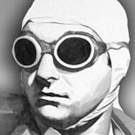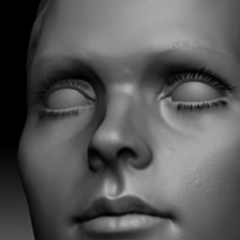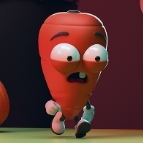Leaderboard
-
in all areas
- All areas
- Videos
- Video Comments
- Files
- File Comments
- File Reviews
- Pipelines Tools
- Pipeline Tool Comments
- Pipeline Tool Reviews
- Databases
- Database Comments
- Database Reviews
- Plugins
- Plugin Comments
- Plugin Reviews
- Images
- Image Comments
- Image Reviews
- Albums
- Album Comments
- Album Reviews
- Topics
- Posts
- Blog Entries
- Blog Comments
- Status Updates
- Status Replies
-
Custom Date
-
All time
May 3 2016 - April 24 2024
-
Year
April 24 2023 - April 24 2024
-
Month
March 24 2024 - April 24 2024
-
Week
April 17 2024 - April 24 2024
-
Today
April 24 2024
-
Custom Date
03/09/2021 - 03/09/2021
-
All time
Popular Content
Showing content with the highest reputation on 03/09/2021 in all areas
-
No it's not as straightforward as that, and there is no 1 rule that will work for any model you import, made by any method; even a flawless mesh that follows all the poly rules can still not work in a procedural setup like this if it is a shape that is not suited to this approach. Stacking bevels and extrudes is not a thing (like AT ALL) in a traditional poly modelling or SDS workflow, so none of the tools are really written to account for that in all situations. Sure, in some case it kinda works and you can get away with it, presumably because you don't care about the intersection that these sort of stacked poly operations are bound to create, and it looks fine in render, and animates tolerably, but you have to realise that when this does work it is not by design that it does so, so we have no real recourse or justification for blaming the tools for something they were never really designed to include. Currently, or at least not using those plugins, Cinema is NOT a procedural modeller at the end of the day, although it makes strides in that area with every new version, and we are certainly not devoid of functionality and systems that can work like that (see mograph and deformers etc), but if you plan to do this all the time, and with very complex shapes, then I'm afraid to say you are using the wrong tool, and Houdini is your friend, and if it isn't, maybe it should be, at least until Scene nodes are fully integrated into Cinema... I bet they can do everything you need, so it is worth checking them out, even in their 'playable tech demo' state in the current version. Sorry it's not better news than that. CBR2 points
-
I don't feel myself entitled to provide such general advice. Not only because I'm not a modeling guy and do know very little about all pitfalls involved, but also because I hate to be proven wrong (and making such general statements is bound to be proven wrong). I'd rather go with Cerbera's advice "to aim for a clean mesh full of evenly distributed quad polygons". Even with this, Py-ParametricTools are really just a simple prove of concept, they are in no way a replacement for a nodal workflow. For example it can be incredibly hard to come up with proper selections for later iterations in the process.2 points
-
My opinion about this (and many artists share this opinion): without a good understanding of anatomy of humans, animals, and such, it will be exponentially more difficult to create convincing models or sculpts of fictional characters and stylized characters. Unless you understand how everything 'relates' in reality, abstracting reality is just not easily possible, if not impossible - because without actually KNOWING how stuff works, it is impossible to reference it adequately. Simple as that. This is why learning to draw the human figure (and various animals) is also recommended for artists interested in learning to sculpt characters: it helps understanding form and shape by observing. I recall my first ever 3d head model (which I modeled in C4d 6 (no sculpting tools at that time!) over two decades ago! ☺️ I referenced photos, and all the references I could get my hands on, and STILL I got many things very, very, VERY wrong! 🤭 But as a first 3d study of a human head it did pay off, and my subsequent models improved over time. Same with the first hand model and the first animal models that I did, and so on. Learning more about anatomy was super useful - not only for more realistic stuff, but just as much for fictional and stylized characters. Humans just 'know' when they are seeing something that isn't quite 'right'. Not to say that there aren't artists who intuitively grasp all this stuff and through practice deliver beautiful 3d characters even without knowing how to draw a simple figure 😛 But I am not one of them. I had to practice and learn about anatomy, shapes, movement, etcetera. Just my two cents.1 point
-
Up to the gunnels in client work at the moment, so won't get time to answer this properly until tonight alas, but yes I think there are better ways to go here. However I need time to test them, so will reply more fully when I've had time to go through all the options. But @MighT is making some very salient points, so you should definitely listen to him too ! 🙂 CBR1 point
-
I can't speak about the way to achieve the described results. I could even imagine there are better ways than Py-ParametricTools for something like this, but I'd rather leave an answer on this to a modeling guru like Cerbera. I just wanted to follow up on the cylinder example. Already closely watch what is happening on the first inner extrude. I doubt you'd want to have that result. While I can not completely exclude there's a possible bug in Py-ParametricTools, the actual culprit is the n-gon cap you start with. In general an n-gon in C4D is nothing but a bunch of simple tris or quads grouped together and hiding the underlying complexity/topology. And a selection (in this case polygon selection) is nothing but a list of polygon indeces (and in case of an n-gon it's actually a list of all polygons grouped into this n-gon). Now, in the first step you apply an inner extrude, which creates additional polygons. Then you want to apply another operation (the extrude) using the same selection tag. But here it gets a bit complicated, for example by adding addtional polygons, the indeces of existing polygons may change. So the list of polygon indeces forming the selection of the n-gon before the inner extrude is not necessarily the correct list after the inner extrude (it should be in this case, yes, but there's no guarantee). But instead go without the n-gon: Here's an example where I created something which in my mind should be similar to what you actually wanted to create (just without the overlapping polys and stuff). Instead of using n-gons, I used the "Preserve Groups" parameter of the tools. Cylinder Extrusions Test_2.c4d1 point
-
It's a problem with the topology. Geo created from splines doesn't typically follow any polygon modelling rules, unless you are supremely diligent at all stages to make sure it does, and this, like so many of the modelling tools cannot work with horrendous meshes full of ngons, or triangles, and with massively uneven polygon distribution such as the sort of thing we get from splines. When you need to use a generator like this it is important to aim for a clean mesh full of evenly distributed quad polygons. Then results become predictable and reliable. CBR1 point
-
I figured some more explanation from my side may be needed, so take a look at this screenshot with a closeup of your model (with no modifiers enabled at all): But the selection for the first extrusion does not select any of these ugly thin degenerated polys.1 point
-
Unfortunately you provided no scene file for the second example. For the first example I can say, it not only breaks after third iteration, but already on first. Actually before first, due to the broken topology of the polygon object and selections, which do obviously not select the intended polygons or points. Maybe I misunderstood the intention of the scene, but then you would need to explain a bit more in depth, what you actually tried to achieve.1 point
-
Hi, I just want to make a note about a new "smart untriangulation tool" called Quadrangler: See a short video on Youtube and further info and download on http://c4dplugin.com. The tool is free for customers of one of the commercial products. UPDATE: Version 1.2 is released and comes with an Unsubdivider. It's not free anymore, but a quite low price. The video link has changed:1 point
-
Without a plugin, it is not possible. With that being said, the perfect plugin for this, that offers so much control over randomized values within a predefined keyframed values is Signal, from Greyscalegorilla. it can add noise, as well as a loop effect through different parameters: noise, sawtooth, sin, cos, etc.. . I 100% recommend it.1 point
-
Put temporarily all objects under object with vertex map tag, rightclick on tag and choose "Copy Tag To Children" command. Then drag out all objects back from temporary hierarchy...1 point
-
Congrats, can't think of anyone better, great guy, hardworking and gets things done. Dan1 point
-
Hi NOEDLE, Just tried one of your landscapes "LS4", I am very impressed! I think you are the Goto Guy. Keep up the excellent work.1 point
-
Wolfgang is perfectly fine. 🙂 Don't worry, it was no work at all. Everything was still there. I always keep lots of copies of objects at various stages of the modelling process, just in case. As far as SDS modelling goes, I avoid triangles whenever possible, and never use N-Gons. I don't use N-gons in hard surface modelling either. And I agree with everything Vector said. Rather than watching videos like the one you mentioned ("Why ngons are BETTER than quads for hard surface" - Really?) they should learn various ways how to resolve tris and N-gons (William Vaughan - The Pushing Points Topology Workbook VOL 1 and 2, available on Amazon). 🙂 Re your question: Yes, I could have turned that complex pole into quads. But it's a hard surface model and it wouldn't have made the mesh prettier or more even, and it wouldn't be pretty quads either unless I add more geometry to make them pretty, which would only make sense for SDS. The complex pole won't matter here. For an SDS mesh I definitely wouldn't leave a complex pole like this, not even on a flat surface. I wouldn't put such a complex pole on edges or in corners of this tram either as it may be problematic when adding chamfers/bevels. On hardsurface models like this one, I do quads where I think it is reasonable and make compromises elsewhere. I do follow certain standards though (my own ones). Keeping quads where I think it is reasonable is one of them. Keeping details in separate mesh parts that I can change/edit without affecting the rest of the mesh is another one. Most of the parts could be remodelled using SDS without too much extra work or the need to start completely from scratch, for example. And even though this geometry is to be considered a "draft mesh", I try and do these meshes in way that is clean and makes sense to me, and that doesn't give me a migraine headache when I use a bevel deformer. Cheers, Wolf3D1 point
-
I am unsure about ILM (I did do a quick search on Google, but nothing related to ILM no longer making use of virtual sets came up), but it seems at least other studios and series have utilized the same virtual sets: Netflix's The Midnight Sky and Jingle Jangle. Various parties are interested in establishing a standard for virtual sets. The main issue right now is hardware: as anyone knows who tried to purchase a new graphics card, that supply chain is severely bottle-necked. As for traditional CPU rendering versus GPU rendering versus GPU realtime rendering: as far as I am seeing, the boundaries are slowly becoming fuzzier and fuzzier. I observe this in render engines like Eevee and Nvidia Omniverse, for example. It is a joy to render at a few seconds a frame, in particular for animations. Traditional slow CPU-only bound render engines are becoming less and less relevant, in my opinion (for freelancers, architectural work, etc - not so much yet in film CG). Cinema's internal physical render engine is lagging behind, and I expect the C4d devs will be replacing it in the next or thereafter release with Redshift/RT. They must to stay relevant in that area after ditching ProRender..1 point
-
Problem solved. I deleted XP from the system and for now I am not re installing it till I buy it and don't have to worry about what ever was causing the system to hang and the trial screen.1 point
-
The peaks on this are of the right ratio, although TBH I've never really understood the 't' business. formula.c4d1 point
-
New personal work, titled 'OMG I FOUND ONE!' =D This little old computer got some mining tools from his grandfather, so he headed out into the deep corners of the web looking for gold. Thanks to his new RTX 3080 for some extra power, he found a bitcoin!1 point
-
Awesome! Thanks for taking your time to provide free high quality textures. If you take suggestions, have you thought about making different paper texture? There arent a lot of paper textures out there and it would be very helpful for Books, Magazines, Leaflets, etc. 🙂1 point
-
you are forgiven 😃 appreciate all the work you're doing!1 point
-
HI. I was referring to not having enough geometry in place to sculpt ears, weather it was good or bad anatomy. If your sculpt is aiming at being like your reference image in your first post then the anatomy is in need of some work which I can help with. Once you understand the skull, the improvement in your sculpt will be significant. Let me know what your goal is, and if you want some anatomy pointers. There is a huge difference in sculpting what you see as to sculpting what your understand. Dan1 point
-
Picked up this project which been sitting on the shelf for a while. Superman! And how blind the people of metropolis are =D1 point
-
Looking good bro. Yep plenty of ways to do face topology. I like to add a few more loops up to the cheek level just to give you a bit more scope for mouth animations but again it depends on how detailed the face is and what you need it to do1 point
-
Hi LECHUCK, I think that what you are experiencing is something a lot of design workers experience. Most of the things you mention are universal for graphic designers as well as for 3d Artists. I would say that long hours for example are more dependent of the company you are working for then the stuff you do. It is absolutely not uncommon in the 3d World. But as you often have longer projects then working 2D you might have the possibility to arrange your work in a smarter way and therefor you might be able to influence it a bit. But the more efficient you are the more work will be put on your stack... so well it stays the same 🙂. I am in a quite similar situation as you are, just on the 3d side. Doing this for 20 years I have the impression to have reached a border, that doesn't let me develop any further. of corse not artistically (there always is plenty of room in 3D) but concerning the projects and income. Over the years this border somehow didn't move with the inflation of lving costs. therefor it relatively gets less over the time. But you will still get paid quite a bit better then a regular graphics artist even thoug you will not get rich. One thing, that I used to love about 3D but after such a long time starts to annoy me once in a while is, that it is 1. a huge area and you have to learn several jobs to master it ( sculpting, camerawork, lighting, directing, and so on) and 2. it developes so rapidly that you always have to learn new things. So you will not get bored that easily but on the other hand it will stay demanding for the rest of your career. And that also is true for a lot of everyday work there are not so many things where you can just switch of your brain. All of this of corse is just my experience living as a freelancer in germany. I wish you the best luck with your decission. best regards Jops1 point










